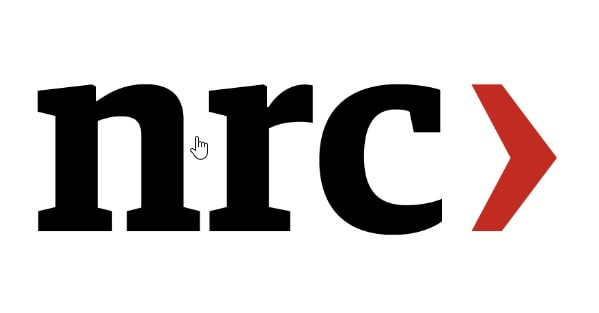Tariff Relief For Retailers: A Temporary Fix?

Table of Contents
The Impact of Tariffs on Retailers
The imposition of tariffs has had a profound and multifaceted impact on the retail sector. Retailers, acting as intermediaries between manufacturers and consumers, have borne the brunt of these increased costs.
Increased Costs and Reduced Profit Margins
Tariffs directly translate into higher costs for retailers, squeezing profit margins and forcing difficult decisions. This is because:
- Higher prices on imported goods: Tariffs increase the cost of imported goods, which form a significant portion of many retailers' inventories.
- Decreased consumer spending: Higher prices at the retail level lead to decreased consumer spending, impacting sales volume and overall revenue.
- Pressure to reduce profit margins: Retailers face intense pressure to maintain competitive pricing, often absorbing some of the tariff-related costs themselves, thereby reducing their profit margins.
- Challenges in maintaining competitive pricing: Balancing the need to remain competitive with the increased costs associated with tariffs presents a significant challenge. Retailers may be forced to cut corners or reduce product offerings.
For example, the tariffs on imported furniture have significantly impacted furniture retailers, forcing them to either raise prices or absorb the increased costs, impacting their profitability. Similarly, the tariffs on certain clothing items have led to higher prices for consumers and reduced profit margins for clothing retailers.
Strategies Retailers Employed to Manage Tariff Impacts
Facing these challenges, retailers have adopted various strategies to mitigate the negative effects of tariffs:
- Price increases: Passing the increased costs directly onto consumers through higher prices.
- Sourcing from alternative countries: Shifting sourcing to countries not subject to the same tariffs. This, however, can lead to new logistical challenges and potentially lower quality.
- Negotiating with suppliers: Attempting to negotiate lower prices or more favorable payment terms with suppliers.
- Absorbing costs: Absorbing a portion of the increased costs to maintain competitive pricing, thus reducing profit margins.
- Reducing product variety: Simplifying product lines to focus on items less affected by tariffs or those with higher profit margins.
The effectiveness of these strategies varies greatly depending on factors like the retailer's size, market position, and the specific products involved. Often, retailers have had to employ a combination of strategies to navigate the challenging environment created by tariffs.
The Nature of Tariff Relief Measures
Government intervention, in the form of tariff relief measures, has provided some reprieve for struggling retailers. However, the nature of this relief is crucial to understand.
Types of Tariff Relief Offered
Several types of tariff relief have been implemented:
- Exclusions from tariffs: Specific products or categories are exempted from tariffs.
- Reduced tariff rates: Tariffs are lowered, but not eliminated.
- Temporary suspensions: Tariffs are temporarily suspended for a defined period.
- Financial assistance programs: Government programs offering financial aid to businesses affected by tariffs.
The criteria for eligibility and the application processes for these programs vary, creating complexity for retailers seeking relief.
Duration and Scope of Tariff Relief
It's vital to understand the limitations inherent in these tariff relief measures:
- Time-limited relief: Many relief measures are temporary, creating uncertainty for long-term planning.
- Specific product categories covered: Relief often applies to specific product categories, leaving others unaffected.
- Geographical limitations: Relief may apply to imports from specific countries or regions.
This inherent uncertainty makes long-term business planning difficult and requires retailers to remain agile and adaptable.
Long-Term Implications for Retailers
While tariff relief offers temporary respite, the long-term implications for retailers remain significant.
Uncertainty and Supply Chain Disruptions
The fluctuating nature of tariffs creates ongoing uncertainty:
- Difficulty in long-term planning: Retailers struggle to make long-term investment decisions due to the unpredictable nature of tariff policies.
- Reliance on unstable supply chains: The reliance on global supply chains susceptible to tariff changes creates vulnerability.
- Potential for future tariff increases: The threat of future tariff increases looms large, hindering strategic planning.
Retailers need to diversify their supply chains and explore opportunities to source goods from more geographically diverse locations.
Consumer Behavior and Demand Shifts
Tariffs have also influenced consumer behavior:
- Changes in consumer purchasing habits: Consumers may adjust purchasing patterns based on price changes caused by tariffs.
- Increased demand for domestically produced goods: Tariffs may increase demand for domestically produced goods, offering opportunities for some retailers.
- Impact on different retail segments: The impact of tariffs varies across different retail segments, impacting some more severely than others.
Understanding these shifting consumer behaviors is key to adapting retail strategies and remaining competitive.
Conclusion
While the current tariff relief offers a temporary reprieve for retailers, it’s crucial to acknowledge its limited scope and duration. The underlying instability of the trade environment necessitates proactive strategies for long-term resilience, focusing on supply chain diversification and building relationships with domestic and international suppliers. The question of sustained tariff relief remains critical to the health of the retail sector. Understanding the complexities of tariff relief for retailers is essential for navigating the current economic climate. Stay informed about future developments and advocate for policies that promote stable and predictable trade relations to ensure long-term growth and sustainability in the retail industry.

Featured Posts
-
 Next Months 7 Key Carnival Cruise Line Updates
May 01, 2025
Next Months 7 Key Carnival Cruise Line Updates
May 01, 2025 -
 Ofc U 19 Womens Championship 2025 Tonga Earns Qualification
May 01, 2025
Ofc U 19 Womens Championship 2025 Tonga Earns Qualification
May 01, 2025 -
 Stroomnetaansluiting Geweigerd Kampen Dagvaardt Enexis
May 01, 2025
Stroomnetaansluiting Geweigerd Kampen Dagvaardt Enexis
May 01, 2025 -
 Sdr Azad Kshmyr Brtanwy Arkan Parlymnt Ky Kshmyr Ke Msyle Ke Hl Ky Hmayt
May 01, 2025
Sdr Azad Kshmyr Brtanwy Arkan Parlymnt Ky Kshmyr Ke Msyle Ke Hl Ky Hmayt
May 01, 2025 -
 Tbs Klinieken Structureel Overvol En Te Weinig Capaciteit
May 01, 2025
Tbs Klinieken Structureel Overvol En Te Weinig Capaciteit
May 01, 2025
Latest Posts
-
 Seven Upcoming Carnival Cruise Line Announcements
May 01, 2025
Seven Upcoming Carnival Cruise Line Announcements
May 01, 2025 -
 Finding Common Ground Addressing Concerns At Parkland School Board
May 01, 2025
Finding Common Ground Addressing Concerns At Parkland School Board
May 01, 2025 -
 Cruises Coms New Rewards Program Earn And Redeem Points On Cruises
May 01, 2025
Cruises Coms New Rewards Program Earn And Redeem Points On Cruises
May 01, 2025 -
 Next Months 7 Key Carnival Cruise Line Updates
May 01, 2025
Next Months 7 Key Carnival Cruise Line Updates
May 01, 2025 -
 Parkland School Board Balancing Change And Stability
May 01, 2025
Parkland School Board Balancing Change And Stability
May 01, 2025
